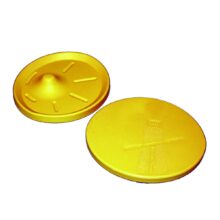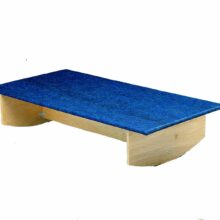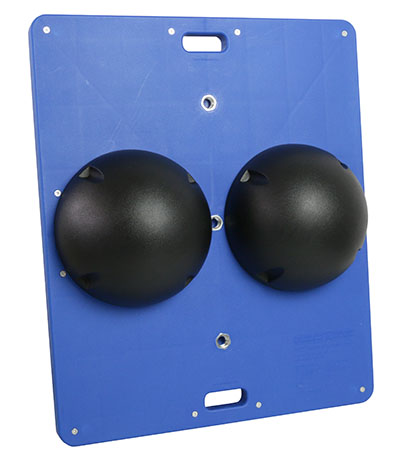Multi Axial Platform System – Home
Login For Health Care Pricing
CanDo®’s Multi Axial Platform System – Home features an elliptical board with off-centered pivoting system.
The CanDo® Multi Axial Platform System – Home comprises an elliptical balance board with off-centered pivot. These balance boards are a vital part of recovery from foot and ankle injuries such as a sprained ankle.
For best results, be careful to select the board for your specific intended foot use (right or left) and the correct weight class (120 pound or 250 pound capacity).
A multi-axial platform system is a sophisticated piece of equipment used in various fields such as biomechanics, rehabilitation, sports performance, and research. Here are some of its key uses and benefits:
Uses
- Biomechanical Analysis: Multi axial platform systems are used to assess human movement patterns in multiple dimensions, providing valuable data on factors such as balance, stability, gait analysis, and joint kinetics.
- Rehabilitation: In physical therapy and rehabilitation settings, these systems are used to design customized exercise programs tailored to individual needs, focusing on improving balance, coordination, proprioception, and functional movement patterns.
- Sports Performance Training: Athletes and coaches use multi-axial platform systems to assess and enhance athletic performance, focusing on areas such as agility, reaction time, coordination, and dynamic balance.
- Fall Prevention: These systems are utilized in fall prevention programs for older adults or individuals with balance disorders to identify risk factors and implement targeted interventions to improve stability and reduce the risk of falls.
- Research and Development: Researchers use multi-axial platform systems to conduct studies on human movement, biomechanics, injury prevention, and performance optimization, contributing to advancements in fields such as sports science, ergonomics, and rehabilitation.
- Neurological Assessment: In neurorehabilitation, these systems are used to evaluate and monitor motor function, balance, and coordination in individuals with neurological conditions such as stroke, Parkinson’s disease, or traumatic brain injury.
- Virtual Reality and Gaming: Multi-axial platform systems are integrated into virtual reality and gaming applications to create immersive experiences that simulate real-world environments and movements, enhancing engagement and motor learning.
Benefits
- Comprehensive Analysis: Multi axial platform systems provide a comprehensive assessment of movement patterns by capturing data in multiple dimensions, offering insights into factors such as force, pressure, acceleration, and center of mass displacement.
- Objective Measurements: These systems offer objective and quantitative measurements, eliminating subjective biases and providing reliable data for evaluation and monitoring purposes.
- Customizable Protocols: Users can customize assessment protocols and training programs based on specific goals, individual needs, and performance metrics, allowing for personalized interventions and progress tracking.
- Real-Time Feedback: Many multi-axial platform systems provide real-time feedback during assessments and training sessions, enabling immediate adjustments and corrections to optimize performance and outcomes.
- Data Integration: Data collected from multi-axial platform systems can be integrated with other technologies such as motion capture systems, electromyography (EMG), and force plates, providing a comprehensive analysis of movement biomechanics.
- Non-Invasive Assessment: These systems offer non-invasive methods for evaluating movement patterns and functional abilities, minimizing the risk of injury or discomfort to the user during assessments and training sessions.
- Evidence-Based Practice: The use of multi axial platform systems is supported by evidence-based research and clinical guidelines, ensuring that interventions and protocols are grounded in scientific principles and best practices.
In summary, multi-axial platform systems are valuable tools for assessing movement patterns, enhancing performance, and optimizing rehabilitation outcomes across a range of applications, offering objective measurements, customizable protocols, and real-time feedback to support evidence-based practice and personalized interventions.










Commentaires
Il n'y a pas encore de commentaires